Article Detail
July 07, 2021
Industry Spotlight
TRANSIT OPERATORS & AUTHORITIES
This month, we would like to spotlight our Transit Authority clients and the advances we have made in the industry. We work to provide service-centric websites for our Transit Authority clients, so riders are able to access every type of online resource possible!
SAMPLE CASE STUDY
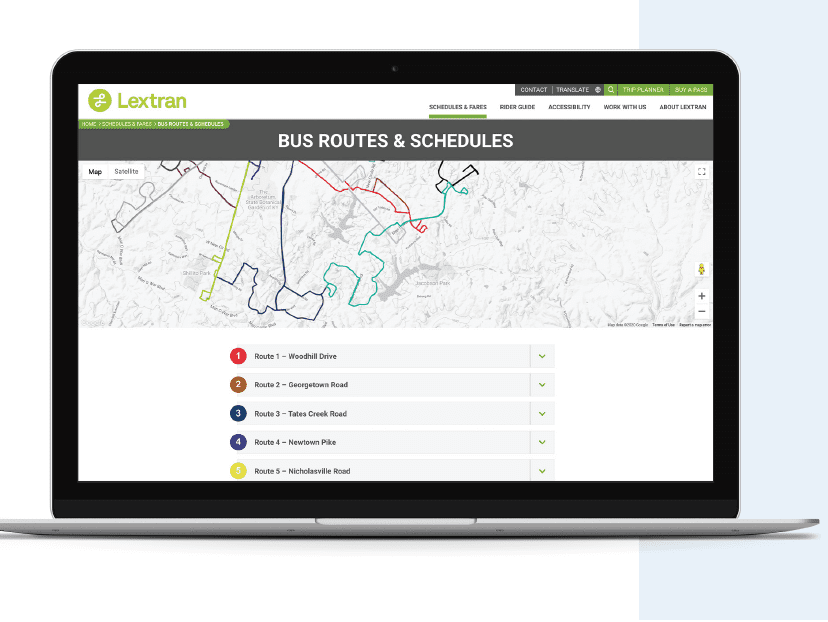 We recently designed and developed newly launched websites for Lextran in Lexington, Kentucky, and the Butler County Regional Transit Authority (BCRTA) in Hamilton, Ohio, they are two of the first transit operators in the United States to incorporate our GTFS+ technology. These sites focus on riders, potential riders, and the rider experience. The new sites integrate GTFS+ and show schedules as an easily scannable list of bus stops. These stops can be expanded to see the various times a route stops there and can then be tapped/clicked to open that specific bus run. This allows the user to narrow down to the information they need on devices of all sizes. The visual display of the routes translates better to mobile devices, pulls information from the GTFS data already created by transit planner software, and is also ADA compliant. We have also integrated features like trip planning, real-time bus tracking, scheduled alerts for specific routes, bus capacity, information, fares, and more!
We recently designed and developed newly launched websites for Lextran in Lexington, Kentucky, and the Butler County Regional Transit Authority (BCRTA) in Hamilton, Ohio, they are two of the first transit operators in the United States to incorporate our GTFS+ technology. These sites focus on riders, potential riders, and the rider experience. The new sites integrate GTFS+ and show schedules as an easily scannable list of bus stops. These stops can be expanded to see the various times a route stops there and can then be tapped/clicked to open that specific bus run. This allows the user to narrow down to the information they need on devices of all sizes. The visual display of the routes translates better to mobile devices, pulls information from the GTFS data already created by transit planner software, and is also ADA compliant. We have also integrated features like trip planning, real-time bus tracking, scheduled alerts for specific routes, bus capacity, information, fares, and more!
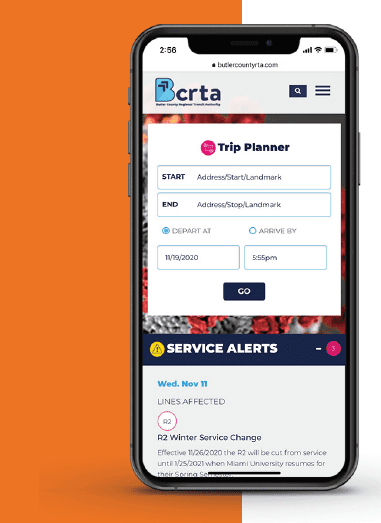 GTFS+ Integration
GTFS+ Integration
Transit operator websites require a specific set of functionality needs. This typically includes Schedules, Maps, Alerts, Real-Time, and Trips, which we refer to as GTFS+. At Planeteria we aim to make the administration of these features easy.
SCHEDULES
GTFS files are imported into the CMS, enhanced, and automatically visually displayed to the rider on the website in our proprietary TranSchedule module. This automated process saves our client’s staff hours of data entry and displays schedules in an ADA compliant and mobile responsive way.
MAPS
Riders have an expectation that maps should be interactive on client’s websites. A system-wide, big picture route map will give riders an overview of our client’s transit system utilizing Google Maps or Open Maps. Using our TranMap module the map will not only be clickable and interactive, but the map can incorporate the client’s visual branding. The map will also update when GTFS is updated. PDF maps will also be made available for download.
ALERTS
A scheduled alert for a specific route is critical information to be distributed to riders. Regular transit riders rely on these alerts in order to get to their destinations on time. The TranAlerts module prominently displays upcoming service alerts, with publish and un-publish dates, and provides a call-to-action for riders to sign up for future text or email alerts for this route.
REAL-TIME
Prime home page real estate, above the fold, can be given to live bus tracking and real-time information. Our TranRealTime module will leverage live bus tracking using DoubleMap, Avail Technologies, Clever Devices, Transit Master, or similar technology.
TRIP PLANNING
Trip planning is the utilized tool and most visited page on transit websites followed by individual route pages. Riders can use an easy and simple trip planning experience, serving up all of our client’s public transportation services on the TranTrip module.
AC TRANSIT & REAL-TIME
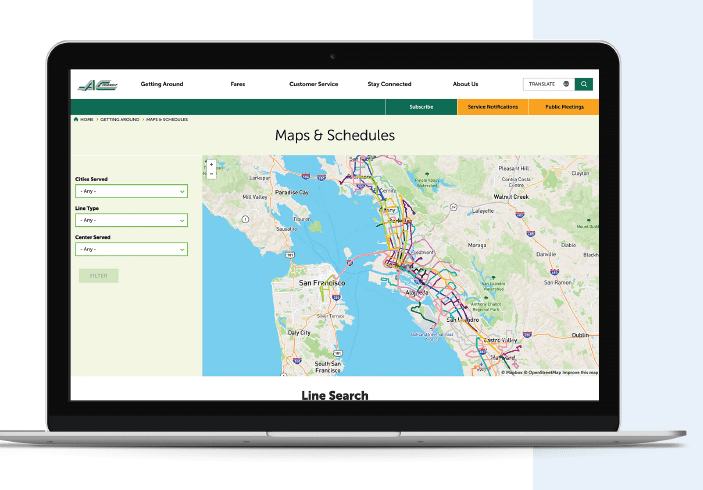 AC Transit, one of the largest transit operators in California, is becoming an industry leader in the digital space with the launch of its new service-centric website. Our goal was to create a website that specifically catered to the rider’s needs and to make it very easy to navigate. Planeteria Media integrated GTFS+ for the bus routes and schedules pages of AC Transit as well as a new approach to the layout of schedule information. AC Transit is one of the first transit operators in the United States to incorporate this occupancy technology whose goal is to keep AC Transit riders safe every day. From an administration standpoint, the website not only saves AC Transit website admins countless hours when updating schedules by leveraging the GTFS data already created by their transit planning software, but it also displays information to the public in a way that is easy to consume and understand on smaller devices. Usually shown in large data tables common on printed schedules, this classic and long-standing approach has never translated well in the digital age of small devices and ADA regulations. The most topical feature is real-time bus occupancy data. Riders are given the ability to look up how full the next arriving bus will be and make a decision to take this bus or wait for one that is less full.
AC Transit, one of the largest transit operators in California, is becoming an industry leader in the digital space with the launch of its new service-centric website. Our goal was to create a website that specifically catered to the rider’s needs and to make it very easy to navigate. Planeteria Media integrated GTFS+ for the bus routes and schedules pages of AC Transit as well as a new approach to the layout of schedule information. AC Transit is one of the first transit operators in the United States to incorporate this occupancy technology whose goal is to keep AC Transit riders safe every day. From an administration standpoint, the website not only saves AC Transit website admins countless hours when updating schedules by leveraging the GTFS data already created by their transit planning software, but it also displays information to the public in a way that is easy to consume and understand on smaller devices. Usually shown in large data tables common on printed schedules, this classic and long-standing approach has never translated well in the digital age of small devices and ADA regulations. The most topical feature is real-time bus occupancy data. Riders are given the ability to look up how full the next arriving bus will be and make a decision to take this bus or wait for one that is less full.
My organization recently worked with Planeteria on a complete website redesign. The project was successful and easy from start to finish. Planeteria reps were extremely responsive and delivered a great product to match my organization’s unique needs. Would highly recommend. Austin Hughes – Lextran
Recent posts
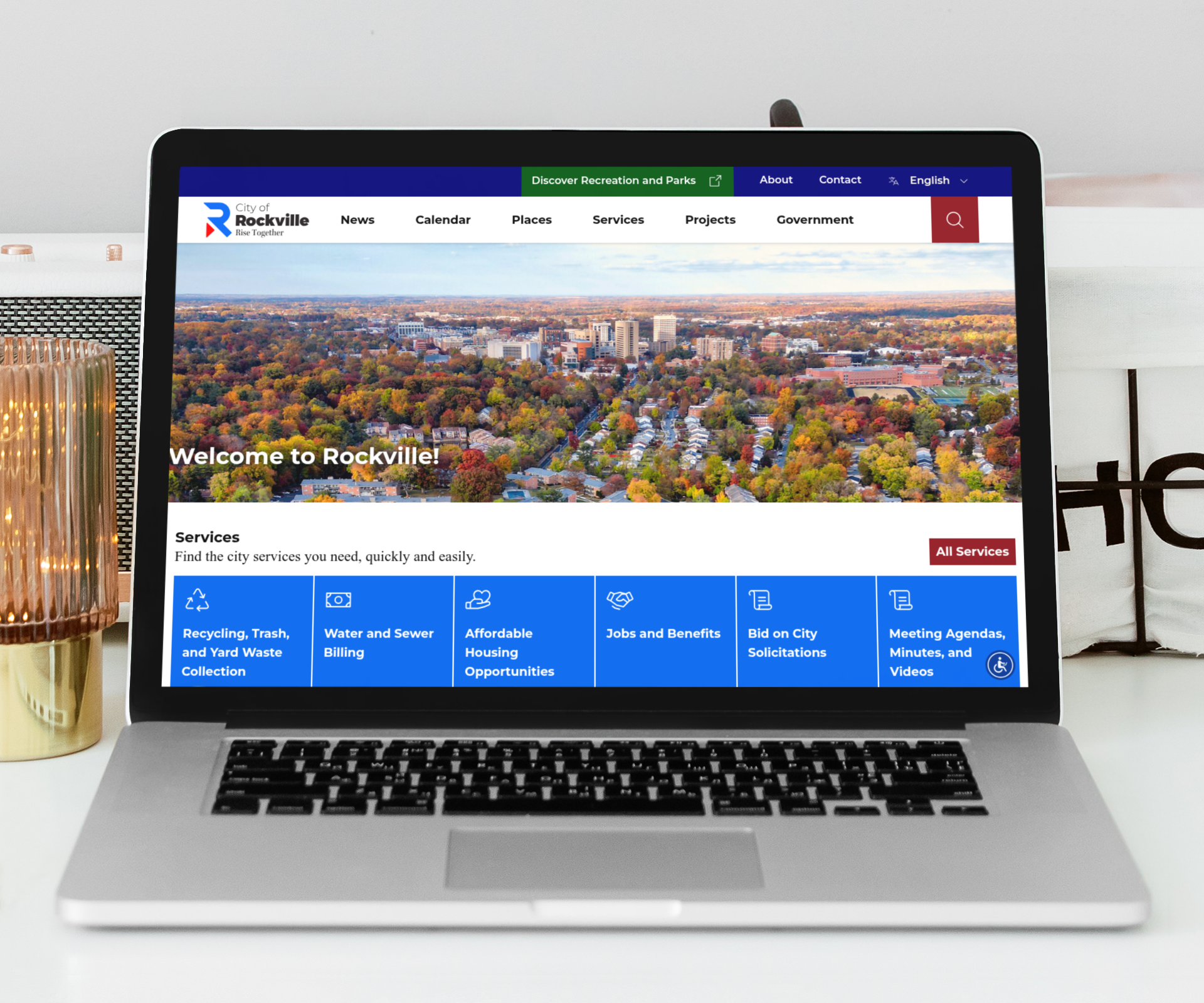
Oct 29, 2025
City of Rockville Launches Modern, Accessible Website
The City of Rockville has unveiled its redesigned website, offering residents, businesses, and visitors a…
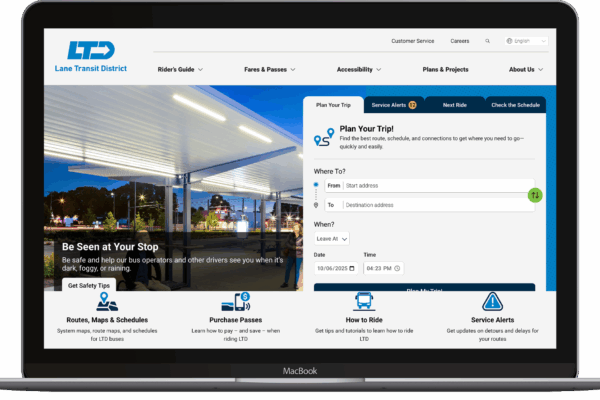
Oct 01, 2025
Lane Transit Launches Modern, Accessible Website
Lane Transit District (LTD) has launched its redesigned website, LTD.org, marking a major step forward…